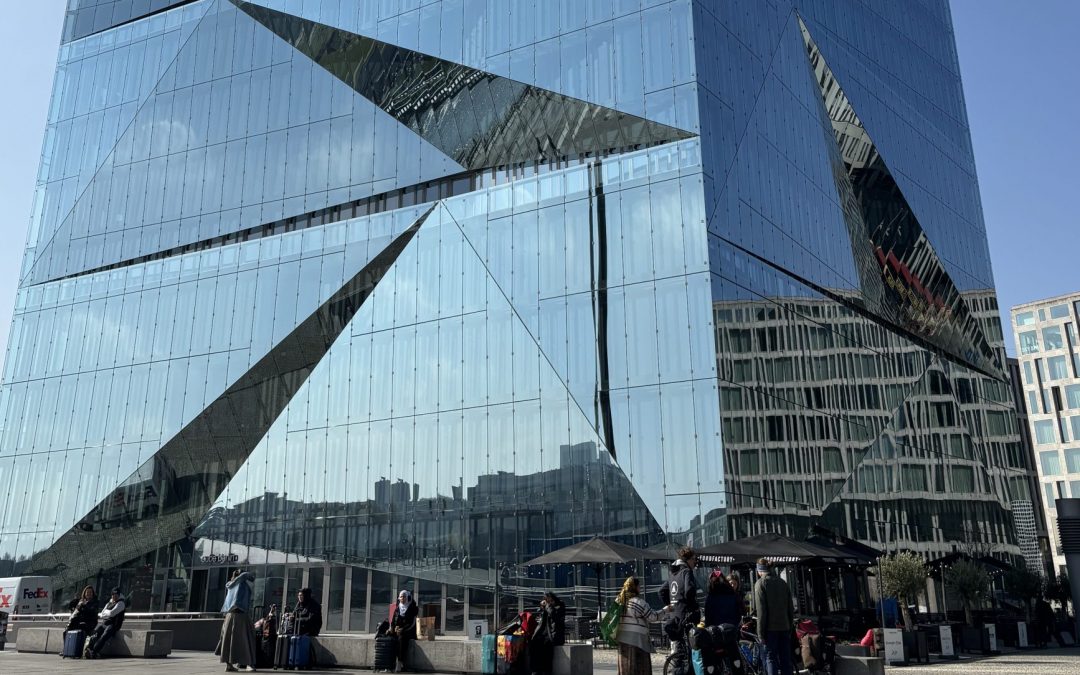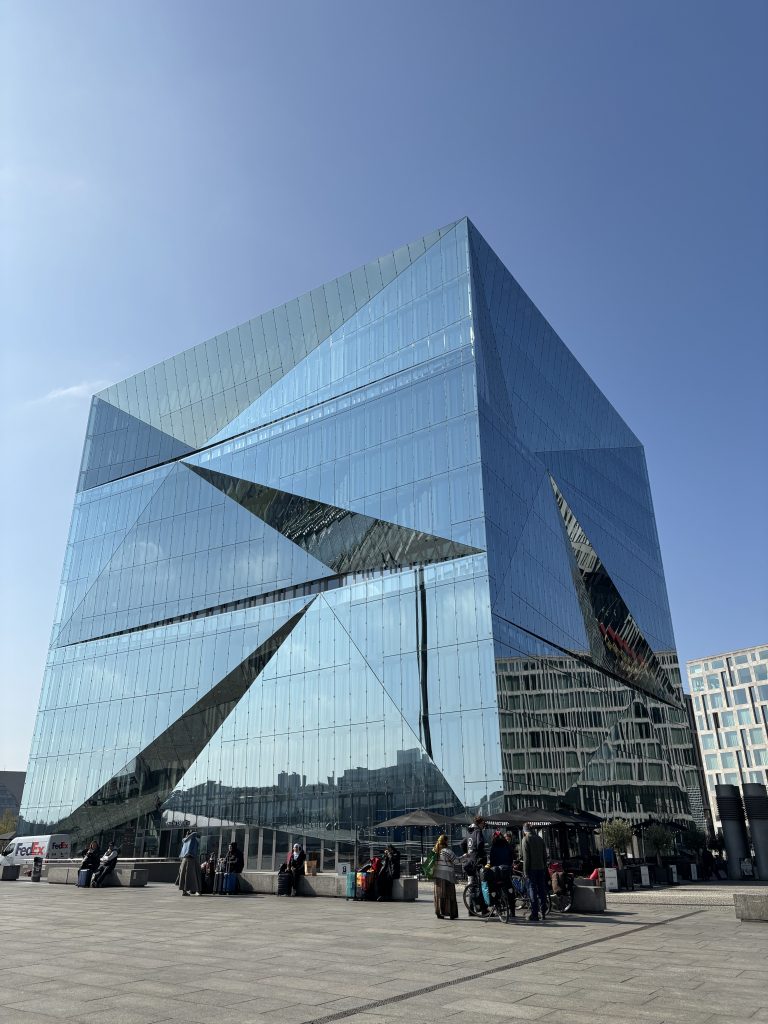
In the heart of Berlin, directly adjacent to the city’s bustling central train station (Hauptbahnhof), stands a building that looks like it belongs in a science fiction movie. With its reflective glass surfaces and geometric façade, Cube Berlin commands attention. But its true innovation lies not in how it looks — but in how it thinks.
Designed by the Danish architecture firm 3XN, Cube Berlin is one of the most technologically advanced office buildings in Europe. Completed in 2020 and developed by CA Immo, this 10-story, 17,500-square-meter structure is more than just an architectural showpiece. It’s a smart building — a responsive, AI-powered environment designed to optimize comfort, efficiency, and sustainability (ArchDaily, 2020; e-architect, 2020).
In a time where cities are growing smarter and more connected, Cube Berlin stands as a pioneering example of what the office of the future might look like.
Designing the Cube
From a distance, Cube Berlin appears like a perfect square — and in fact, it is. Each side of the building measures 42.5 meters, creating a mathematically precise cube. Its bold cubic volume is accentuated by a fully glazed double-skin façade, which consists of triangular prism-like facets. These reflective surfaces catch and distort the surrounding cityscape, creating ever-changing visual impressions as light and shadows shift across the day (ArchDaily, 2020).
While its appearance is sculptural, the design serves functional purposes. The indentations in the façade cleverly house concealed outdoor terraces for each floor — providing private balconies for office occupants without interrupting the uniformity of the cube’s exterior. These terraces are completely invisible from outside the building (ArchDaily, 2020).
The geometry is more than aesthetic. It reflects a desire to maximize light, minimize solar gain, and enable passive environmental performance, all while offering a sense of openness and connection to the outdoors in a dense urban setting.
An Intelligent Core: AI and Smart Technologies
At the heart of Cube Berlin is a powerful artificial intelligence system, often referred to as the building’s “digital brain.” Developed in collaboration with the German smart building platform Thing-it, this system orchestrates the building’s operations based on real-time data collected from more than 3,800 sensors and beacons embedded throughout the structure (Warema, n.d.).
These sensors monitor everything from room occupancy, air quality, and lighting conditions to energy consumption and user behavior. Based on this data, the AI system dynamically adjusts heating, cooling, ventilation, and lighting to match actual usage and user preferences (Warema, n.d.; Architectural Digest, 2020).
What sets Cube Berlin apart is the way this technology is delivered to its users. Each occupant interacts with the building through a custom mobile app that connects to the AI system via Bluetooth. The app enables users to:
- Control lighting and room temperature
- Manage access to rooms and zones
- Reserve desks or meeting spaces
- Coordinate parking and mobility options
The system learns from patterns — for example, if you prefer a cooler temperature in the afternoon or a specific lighting setup for meetings, it remembers and adapts. Over time, this creates a deeply personalized experience that’s both user-centric and energy-efficient (Warema, n.d.).
Façade as a Climate Engine
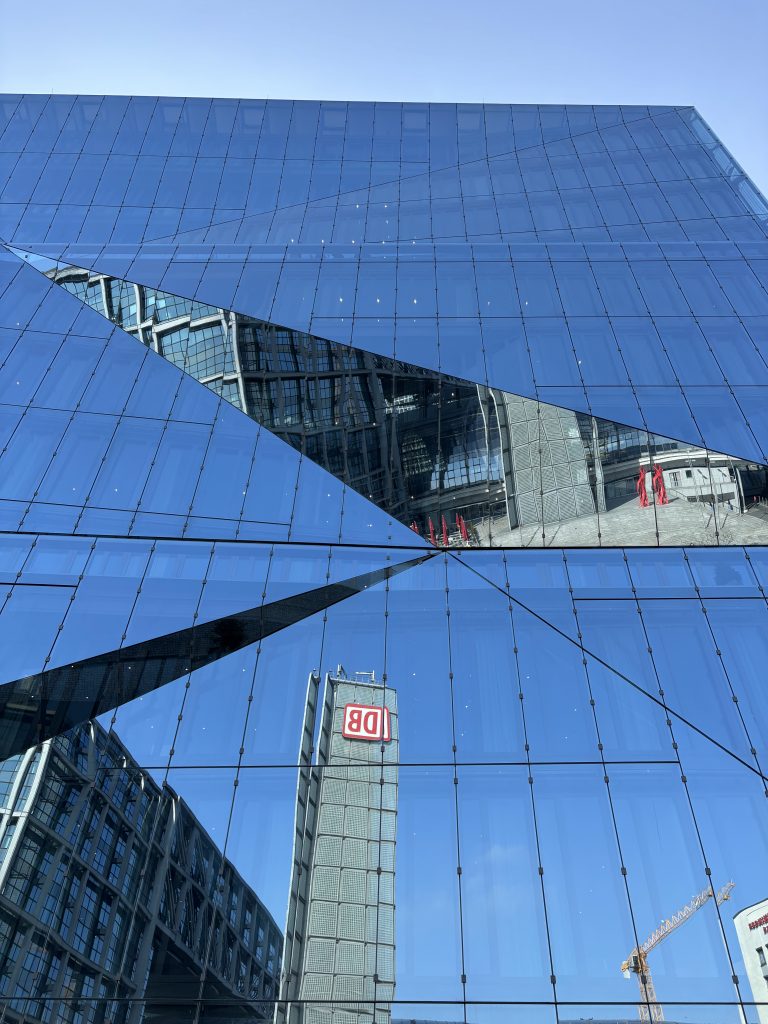
One of the most innovative elements of Cube Berlin is its façade system — a fully glazed, double-skin envelope designed not just for aesthetics, but performance.
The double-skin façade allows for natural ventilation and effective insulation. The outer skin protects against wind and weather, while the inner layer supports thermal buffering. Integrated within this façade are external venetian blinds (WAREMA E 80 AF) that operate automatically based on sun position, temperature, and occupancy (Warema, n.d.).
The blinds are controlled by a system called BAline, which works in tandem with the building’s AI and the user app. When a room is unoccupied, the system maximizes shading or daylight based on environmental needs. When occupied, users are notified of suggested adjustments to their blinds via the app and can approve or modify them (Warema, n.d.).
This façade is also equipped with high-performance solar control glazing — reflective coatings that minimize thermal radiation entering the building without sacrificing daylight. Combined, these features help Cube Berlin reduce its cooling and lighting demands significantly, contributing to energy efficiency levels that are around 25% better than standard green buildings (Architectural Digest, 2020).
Smart Automation at Work
To enable such granular control and automation, Cube Berlin incorporates over 260 wireless, energy-autonomous room control units provided by Kieback&Peter GmbH. These devices allow occupants to fine-tune their personal work environments and also integrate into the central system that tracks broader building performance (Kieback&Peter, n.d.).
The automation is context-aware. For instance, blinds adjust their slat angles based on real-time sun tracking. In summer, this prevents overheating. In winter, it strategically allows passive solar gains to reduce heating loads. The result is a building that doesn’t just respond to its environment — it anticipates it (Kieback&Peter, n.d.).
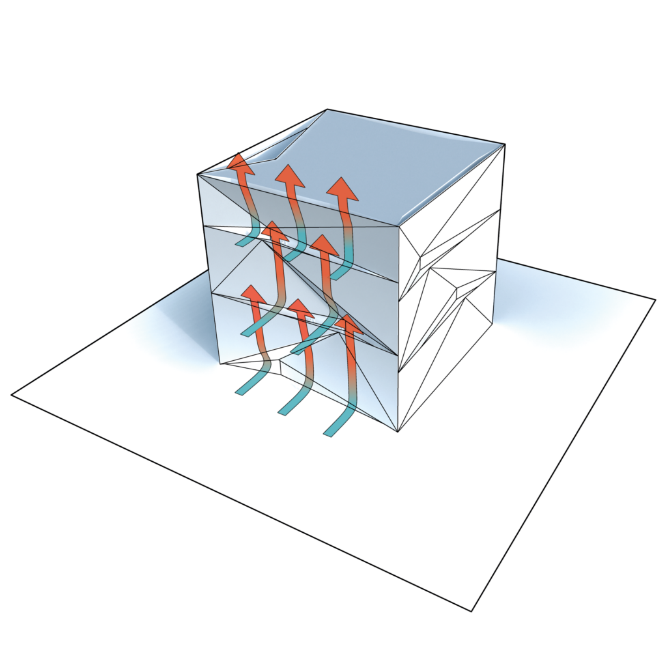
Sustainability as a Built-In Value
Cube Berlin is not only smart — it’s also green. From its efficient HVAC systems to the integrated daylight and shading strategies, every aspect of the building has been engineered to reduce operational carbon emissions. Water use is optimized through low-consumption fixtures, and the smart systems reduce energy waste by operating strictly on demand (e-architect, 2020; Warema, n.d.).
These efforts are recognized through the building’s ambition to achieve DGNB Gold certification — a German standard for sustainable construction that takes into account ecological, economic, sociocultural, and functional quality (e-architect, 2020).
What Does Cube Berlin Tell Us About the Future?
Cube Berlin is more than a high-tech office tower. It’s a prototype — a vision for the integration of architecture, user experience, and sustainability.
As remote work, flexible schedules, and environmental concerns reshape how we use buildings, Cube Berlin offers a compelling response. It empowers occupants with control, optimizes operational efficiency with data, and enhances well-being without sacrificing aesthetics.
It also raises some deeper questions:
- Should all buildings be responsive to human needs?
- How can AI and architecture collaborate for better cities?
- What privacy or ethical considerations arise when buildings “learn” from us?
Final Thoughts
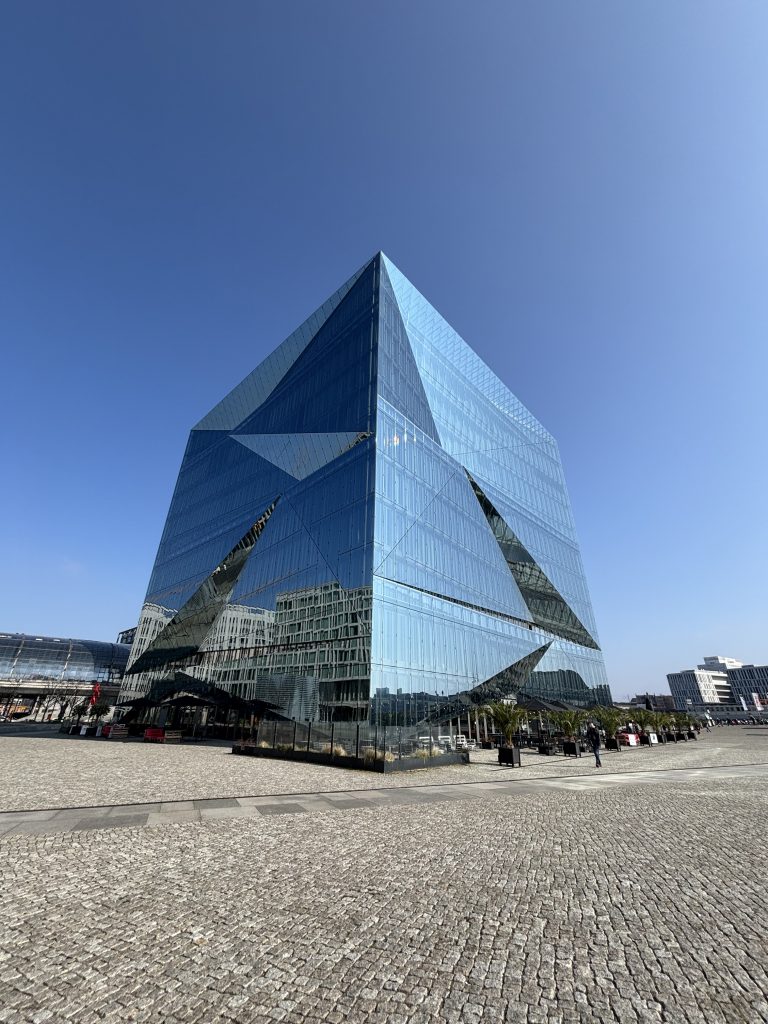
As a piece of architecture, Cube Berlin is stunning. As a piece of technology, it’s groundbreaking. But perhaps most impressively, it’s a fully operational example of what a next-generation workplace can be — sustainable, intelligent, and designed for the people inside.
As we continue building the cities of the future, Cube Berlin reminds us that architecture isn’t just about form or function — it’s about relationships: between people, spaces, and systems.
Would you want to work in a building that knows your name and your ideal room temperature?
Let’s talk about it.
References
ArchDaily (2020) Cube Berlin Smart Office Building / 3XN. [online] Available at: https://www.archdaily.com/935777/cube-berlin-smart-office-building-3xn
Architectural Digest (2020) This Eco-Friendly Smart Office May Be the Future of Workspaces. [online] Available at: https://www.architecturaldigest.com/story/eco-friendly-smart-office-future
e-architect (2020) Cube Berlin Building. [online] Available at: https://www.e-architect.com/berlin/cube-berlin-building
Kieback&Peter (n.d.) Cube Berlin – The Intelligent Office Building. [online] Available at: https://www.kieback-peter.com/en/references/project/cube-berlin/
Warema (n.d.) Cube Berlin – Smart Office on the Spree. [online] Available at: https://architects.warema.com/en/services-tools/references/cube-berlin.html
This article is written by student representatives of TITAN Behnam Razmand and Fernanda Padierna Mena who are currently studying in Berlin. Student representatives share knowledge from the field of study of Construction and Real Estate Management.
